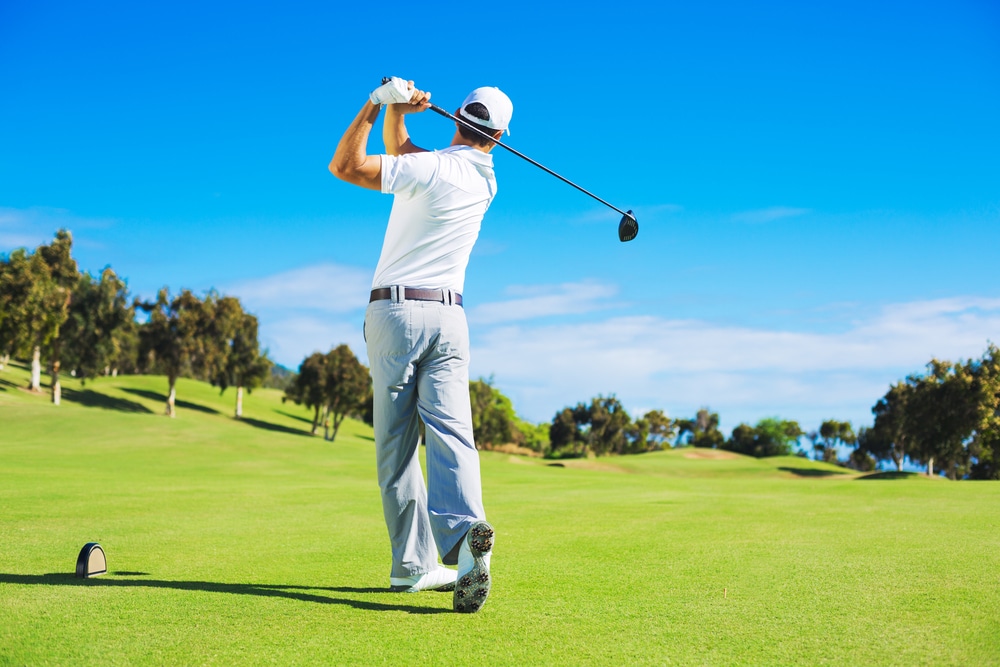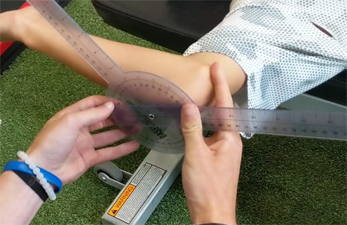Alleviating Back Pain in Your Golf Game


Golf is among the most popular sports in America. In fact, the number of Americans who enjoy playing this sport continues to increase every year. According to the National Center for Biotechnology Information, there are more than 25 million golfers in the United States alone. Nearly 25% of them are over the age of 65.
Unfortunately, a majority of golfers experience some kind of low back pain while playing. If you’re a golfer, you may have experienced this pain at some point. The most common reasons are sprains and strains. While golfing, the motion you use to swing your clubs puts tremendous strain on your lower back, especially if you lack in hip and thoracic mobility. On top of that, you repeat this motion multiple times over the course of 18 holes. By the end, you might be in desperate need of back pain relief!
Beyond repetitive motions, age is another factor that affects golf-related back pain. As you age, the mobility of your spine decreases. Your body then tries to steal that mobility from areas that should be stable, like your low back. As a result, you’re more likely to experience low back pain while golfing as you age if you are not taking intentional steps to address tissue and joint mobility.
Fortunately, you can alleviate this back pain in many ways. For instance, knowing how to properly swing the club to eliminate the chances of hurting your back is helpful. So is engaging in a regular fitness routine that addresses mobility and quality of movement. Another way is to seek physical therapy for back pain. At Athletes’ Training Center, we can provide physical therapy that offers specialized techniques for golfers, as well as fitness routines led by qualified coaches familiar with the specific needs of golfers…
Ways to Reduce the Chances of Low Back Pain While Golfing
The best way to avoid back pain while golfing is to prevent it in the first place. In order to achieve that, you should focus on four key tasks.
1. Warming Up
Like any other sport, you need to warm up before you get onto the golf course. Hitting the ball without stretching is a good way to put your back in jeopardy. Stretching beforehand loosens up your muscles. The key areas you should focus on when stretching are your hips and upper back.. Then, you can gently swing your clubs back and forth to warm up the muscle groups that you’ll use during play. You can also use your clubs as a stretching tool.
2. Practice Your Swing
When you take a swing to hit the ball, you generate a lot of torsion and torque on your lower back if you are not using your upper back and hips to generate the mobility needed for the coil and uncoiling of the swing. It’s important to develop a rhythmic and smooth swing, but with rotation around your lower back and not through that area. The only way to do that is to practice your swing using quality mechanics.
Keep in mind that practicing the perfect swing isn’t the same as warming up. Practice swings are a bit more intense than warm up swings but still don’t require the force that you’ll use while actually hitting the ball.
During practice, remember that your pelvis, shoulders and thoracolumbar area should share the load of the swing. Learning how to use all of these elements together can not only give you a more desirable swing but also reduce pressure on your lower back.
3. Understand the Biomechanics of Golfing and Your Lower Back
Learning the biomechanics of golfing can help you better understand your lower back pain. When you swing a club, you put a lot of stress on the L5-S1 disc segment in your spine. The joints in this area are intended for stability and not the considerable rotation that occurs. The other joints in your low back are not intended for rotation either.
Understanding these biomechanics can help you learn how to reduce the stress that you put on the L5-S1 segment of discs. For example, improving thoracic mobility and hip mobility can help reduce stress on this segment.
4. Carry Your Golfing Bag Safely
The motion of golfing isn’t the only factor that causes lower back pain. The act of carrying your golfing bag around can put excess strain on your back as well. While it’s good exercise compared to using a golf cart, it can put significant pressure on your back. You may want to consider using a dual-strapped bag to divide the weight across your back evenly. It will reduce the chances of stressing out your lower back from carrying an uneven load, but only if adjusted properly.
How Physical Therapy Can Help
Physical therapy can offer golf back pain relief when it’s applied correctly. At Athletes’ Training Center, we offer an advanced approach that fully appreciates the biomechanics of the golf swing in relation to the most efficient movement patterns for the body. With the right approach, therapeutic exercise can address deficiencies and fix mobility issues that can cause havoc through the kinetic chain. Many practices rely on ultrasound, e-stim or other passive modalities, but those are limited in their effectiveness. . With our approach, we can create a treatment plan to relieve your back pain and reach your golfing goals.
The Time is Now
The mistake most people make is to wait until they begin hitting the course to address their back pain. If you need physical therapy for back pain, the time is now to seek solutions – before the golfing season begins. Often, many issues can be addressed with a knowledgeable training plan and performance coach. Whether physical therapy or training, consider reaching out to us at Athletes’ Training Center. Our knowledgeable staff members are ready to work with you! Contact us today to schedule an evaluation.




